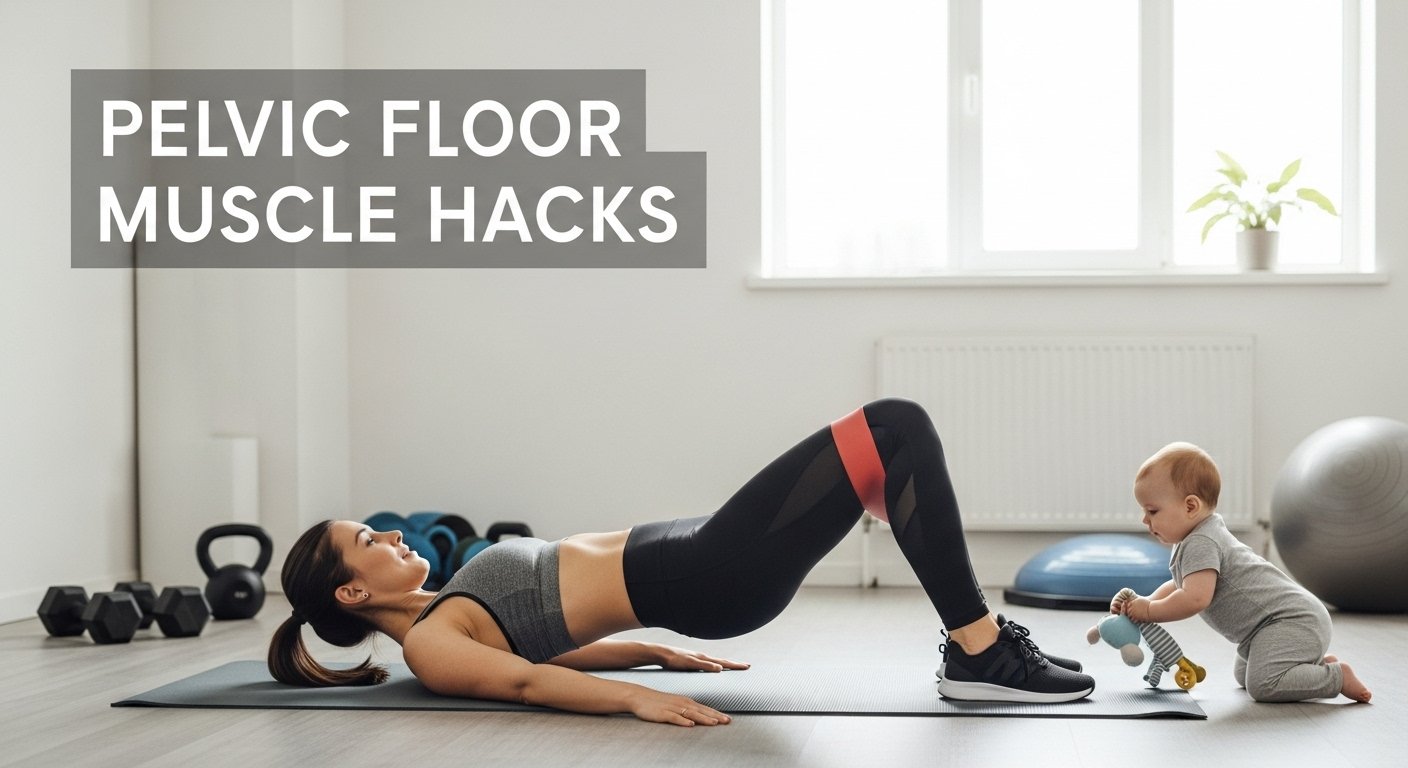Congratulations, mama-to-be! As you prepare for your little one’s arrival, you’re likely thinking about how to make your postpartum recovery as smooth as possible. One key area to focus on? Your pelvic floor muscles. These unsung heroes play a massive role in supporting your body during pregnancy and recovery after birth. Strengthening and caring for them can help you bounce back faster, reduce discomfort, and even boost your confidence.
In this article, we’ll share 7 pelvic floor muscle hacks to speed up your postpartum recovery. These tips are practical, easy to implement, and designed with expecting moms like you in mind. Let’s dive in!
Why Your Pelvic Floor Matters Postpartum
Your pelvic floor muscles act like a hammock, supporting your bladder, uterus, and bowels. Pregnancy and childbirth (whether vaginal or cesarean) can weaken or strain these muscles, leading to issues like incontinence, pelvic pain, or discomfort during intimacy. Strengthening them can make a world of difference in your recovery.
Curious about other ways to prepare for labor and delivery? Check out our guide on 15 hospital bag essentials for a smooth delivery to ensure you’re ready for the big day!
Hack #1: Master the Kegel (But Do It Right)
Kegels are the go-to exercise for pelvic floor health, but doing them incorrectly can do more harm than good. To perform a proper Kegel, imagine stopping the flow of urine midstream. Squeeze those muscles for 5-10 seconds, then release. Aim for 10-15 reps, 2-3 times a day.
Pro Tip: Don’t overdo it—overtightening can lead to muscle fatigue. If you’re unsure about your technique, consult a pelvic floor physical therapist. For more ways to prepare your body for birth, explore our 8 natural ways to help labor progress.
Hack #2: Try Deep Belly Breathing
Deep breathing isn’t just for relaxation—it’s a game-changer for your pelvic floor. Lie down, place a hand on your belly, and inhale deeply, letting your belly rise. As you exhale, gently engage your pelvic floor muscles. This helps improve circulation and muscle coordination.
This technique also doubles as a labor pain management tool. Learn more in our post on 5 breathing techniques to manage labor pain.
Hack #3: Use a Supportive Nursing Pillow
Breastfeeding can strain your posture, which indirectly affects your pelvic floor. A comfy nursing pillow helps you maintain proper alignment while feeding your baby, reducing pressure on your core and pelvic muscles. We love this Nursing Baby Breastfeeding Pillow Cover for its soft, supportive design—perfect for long feeding sessions.
For more postpartum essentials, check out our 10 must-have clothes for moms after delivery to stay comfy and stylish.
Hack #4: Incorporate Gentle Core Exercises
Your pelvic floor works closely with your core muscles, so strengthening both is key. Try gentle exercises like pelvic tilts or modified bridges. Lie on your back with knees bent, tighten your pelvic floor, and lift your hips slightly. Hold for a few seconds, then lower. Start with 8-10 reps daily.
Want to lose the baby weight safely? Pair these exercises with tips from our 5 simple habits that help moms lose baby weight naturally.
Hack #5: Stay Hydrated and Eat Pelvic Floor-Friendly Foods
Hydration and nutrition play a big role in muscle recovery. Drink plenty of water to keep tissues elastic and prevent constipation, which can strain your pelvic floor. Foods rich in fiber, like fruits, veggies, and whole grains, also help. For inspiration, see our 7 postpartum superfoods that support recovery and boost breastfeeding.
Hack #6: Use a Cushioned Seat for Comfort
Sitting for long periods (hello, endless feeding sessions!) can put pressure on your pelvic floor. A cushioned seat, like this 2-in-1 Cushy High Chair and Shopping Cart Cover, provides extra comfort whether you’re at home or on the go. It’s a small change that makes a big difference.
For more meal-prep hacks to ease your postpartum days, try our 7 easy crockpot freezer meals for the fourth trimester.
Hack #7: Rest and Recover Mindfully
Rest is just as important as exercise. Avoid heavy lifting or high-impact activities until your pelvic floor is stronger (usually around 6-12 weeks postpartum). Listen to your body and ease back into movement gradually. For more recovery tips, read our 10 gentle ways to lose weight safely after birth.
Final Thoughts: You’ve Got This, Mama!
Your pelvic floor is a powerhouse, and with these hacks, you’re setting yourself up for a stronger, faster recovery. Start small, be consistent, and don’t hesitate to seek professional guidance if needed. You’re not just recovering—you’re building a foundation for long-term health and confidence.
For more tips on navigating pregnancy and postpartum, visit our blog for a wealth of resources tailored to expecting and new moms. Wishing you a smooth and joyful journey into motherhood!

